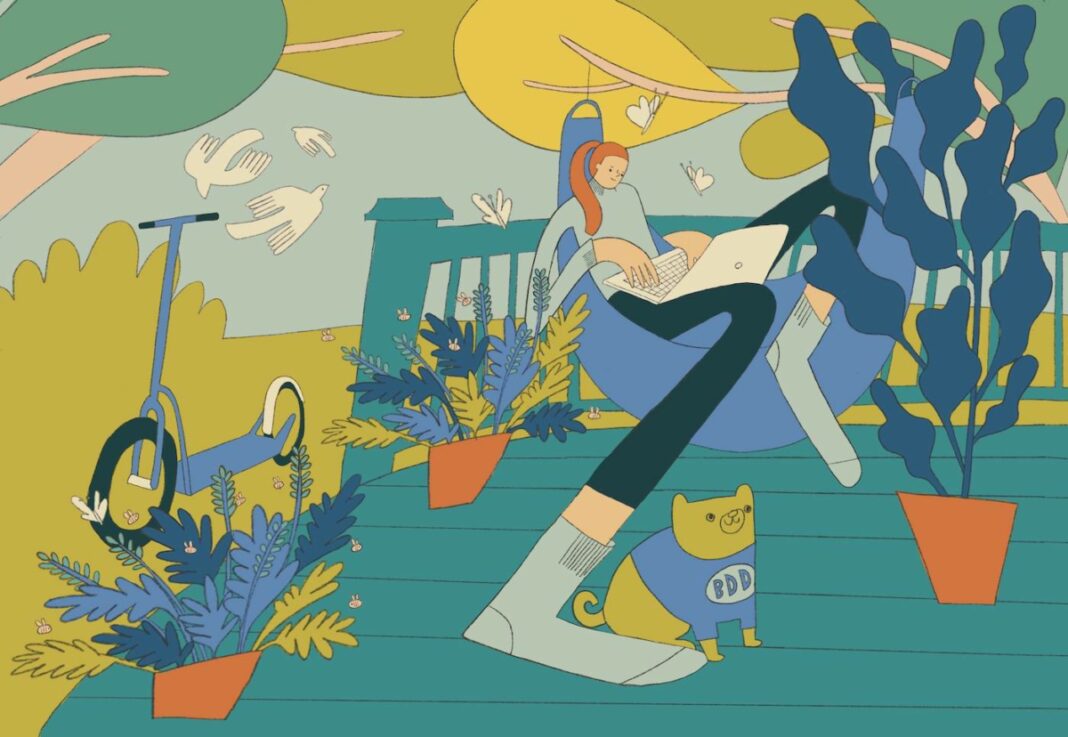Dear Dot,
My husband is harping about the toilet paper I purchase, the super-soft kind that’s easy on my delicate nether region. He says I’m a tree killer and that it’s bad for our septic. But doesn’t toilet paper pretty much dissolve in water? How much difference can one product make?
–Tender Tush
Dear Tender Tush,
You, my tender tushed friend, have hit upon one of Dot’s bugbears — people’s insistence upon multi-ply, silky soft toilet paper. If there is one exceedingly simple but impactful change people can make in their day-to-day purchasing, toilet paper is it.
Why?
I’m going to let Jennifer Skene, Natural Climate Solutions Policy Manager, Canada Project with the Natural Resources Defense Council, explain. “The Canadian boreal forest is the most carbon-dense terrestrial ecosystem in the world, storing twice as much carbon as the world’s oil reserves in its vegetation and soil,” Jennifer tells us. “Protecting the boreal’s vast carbon stores is essential to avoiding catastrophic climate change.” “Essential.” Did you catch that, Tender Tush? But there’s more: “The boreal is also a refuge for some of North America’s most treasured species like boreal caribou, lynx, and pine marten, and the nesting ground for billions of migratory songbirds who spend summers in the boreal and fly as far south as Argentina and Antarctica for the winter,” she says. “It’s also home to over 600 Indigenous Peoples, who have lived on and stewarded the land for millennia.”
Unfortunately, she says, industrial logging is decimating more than a million acres of this crucial forest every year, much of it in never-before-logged (what are called “primary”) forests, which have particular value as an ecosystem.
How does toilet paper factor threaten this boreal treasure trove?
“Much of this logging is driven by demand, particularly in the United States, for toilet paper and other tissue products like facial tissue and paper towels,” Jennifer says. “The three biggest tissue producers, Procter & Gamble, Kimberly-Clark, and Georgia Pacific, continue to make their top toilet paper brands (Charmin, Cottonelle, Angel Soft, and Quilted Northern) entirely from virgin forest fiber, a significant proportion of which comes from the Canadian boreal. This means that, when customers buy these brands, they are unwittingly flushing some of the world’s most globally significant forests down the toilet. Bummer, huh?
What’s especially egregious, Jennifer says, is that alternatives exist. Good alternatives. Alternatives that are also tender on your tush (I swear!) — alternatives that preserve these pristine primary forests while also performing toilet paper’s function.
Consider that Wirecutter, the New York Times’ widely respected review column, dumped (ahem) P&G’s toilet paper from its top spot in favor of Seventh Generation’s 100% recycled TP, which test-users noted is soft and lint-free. The NRDC’s own TP scorecard gives top marks to Who Gives a Crap’s 100% recycled version. The point is there are loads of companies creating products that will do the job without trashing the trees. So why not let your tush test some of these alternatives out? Jennifer tells us what to look for: “Our recommendation, conveyed in our scoring methodology in our Issue with Tissue report, is for toilet paper purchasers to choose brands made from 100% recycled material—particularly those with a high percentage of post-consumer recycled content, which is even more sustainable than pre-consumer recycled material,” she explains. “The second-best choice would be a brand made from sustainable alternative fibers—for example, FSC-certified bamboo [ed note: Forest Stewardship Council certified is a widely respected third-party certification]. Bamboo does carry the risk of being sourced from plantations created from recently clear-cut forests, which is why consumers need to make sure their bamboo products carry the FSC label.”
And let’s clear up something that I suspect gets in the way of people choosing the recycled versions. Toilet paper made from 100% post-consumer recycled material is not, I repeat not, made from 100% post-consumer recycled toilet paper. While it’s recycled, sure, it’s recycled from other paper products, so it has never touched another bum before. Got it? Okay, let’s resume.
A good friend of mine tossed toilet paper altogether and installed a bidet, for which she has become something of an evangelist. Jennifer is on board with bidets too, noting that “bidets actually use less water than is required in the toilet paper manufacturing process, and have hygienic benefits as well.”
But bidets seem to be a tough sell in North America, though they’re gaining in popularity. In the meantime, if the big manufacturers of toilet paper would just commit to more sustainable products, the impact would be hugely significant. The NRDC put it this way in a press release: “Together with Indigenous leaders and other partners, NRDC is pushing U.S. tissue makers like Procter & Gamble to take steps to minimize their impact on the planet, including sourcing half or more of their pulp from post-consumer recycled content, which would save at least 1.6 million tons of virgin wood from being turned into throwaway tissue products every year.” Let’s help make this happen by voting with our wallets to support those companies who are producing TP with a lower, errrmm, buttprint. It’s a simple thing with a big impact, just the kind of eco-action we love!
As for your septic system, they are designed to handle toilet paper, even the multi-ply cushy kind. Nonetheless, too much can tax your tank and requires more water to break down so septic experts encourage us to go easy on the volume of toilet paper we flush. And don’t even think of using those so-called “flushable” wipes, which wreak havoc on both septic systems, municipal sewers, and the planet.
Flushingly,
Dot


